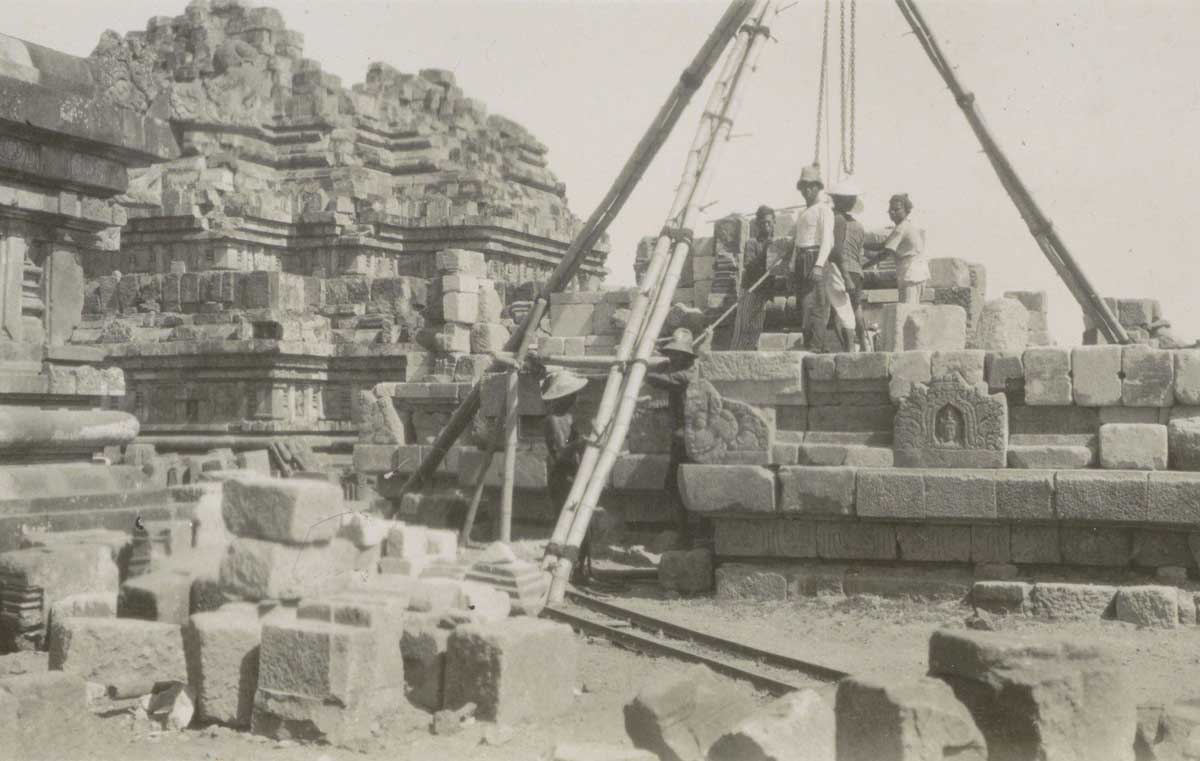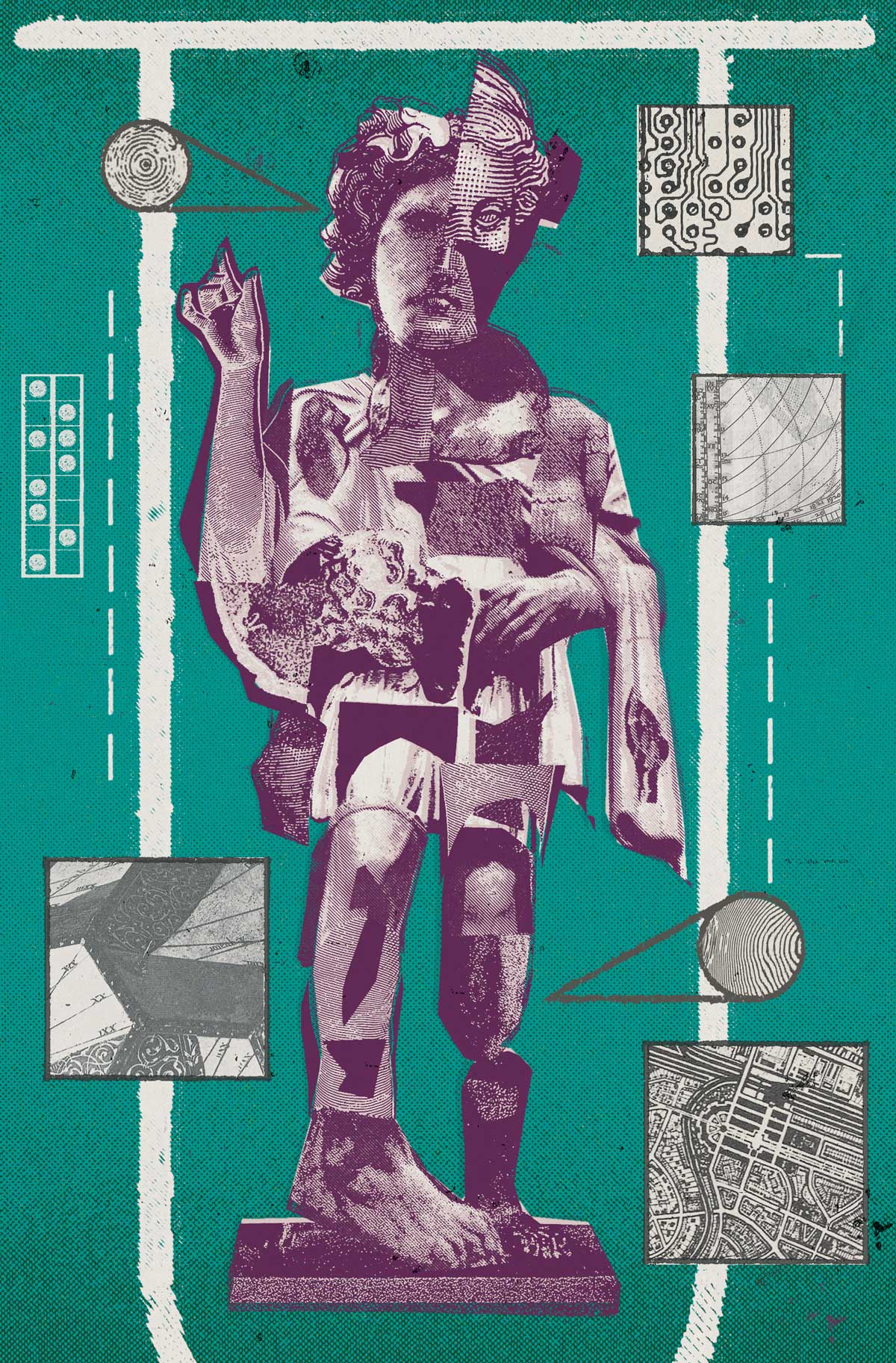Finding Wonderful Things | History Today - 9 minutes read

‘Yes, wonderful things,’ was the publicised response of Howard Carter when asked what he could see inside the tomb of King Tutankhamun. These ‘wonderful things’ were ‘strange animals, statues, and gold – everywhere the glint of gold’. In the century since Carter’s discovery the study and practice of archaeology has advanced enormously; yet the reporting of excavations in the media often still reflects a treasure-seeking mentality, privileging the discovery of ‘works of art’ and devoting few lines, if any, to the broader context of a project. This focus risks reinforcing the perception that archaeology is about finding ‘treasure’ and denies the public access to a fuller understanding of the significance of what is found.
In July this year the torso of a large marble statue, approximately 1.5m in height, was excavated in the Forum of Trajan in Rome during a dig conducted by the Sovrintendenza Capitolina and supported by a €1 million donation from the Republic of Azerbaijan. Even though its head, hands and legs are missing, the figure’s cloak, the assumed positioning of its lost hands clasped in front of the waist and the find-spot make the statue identifiable as a captive Dacian warrior – an enemy of Rome from the second century. This find came shortly after the uncovering in May of another statue – an oversized marble head – from the same excavation. The wavy locks of its hair initially led to speculation that the statue was a female deity, before closer inspection revealed the hairstyle to be that of the god Dionysus. Accompanied by videos of dirt being brushed from the folds of the Dacian’s clothing and the features of the god’s face, both finds were widely reported in the international press and then circulated across social media; the discovery of the Dionysus even drew comment from Rome’s mayor, who expressed surprise that such a statue had been found in Rome. Many of these reports took the angle of a discovery of ‘wonderful things’, with little accompanying commentary either about what the importance of the statues might be, or the background and significance of excavations in this area of Rome. Both are subjects worth considering further.
The statues in context
The reason that the statue of the Dacian is so readily identifiable, despite its missing head, is because the type is known from numerous other examples in the city. Robed in long cloaks over trousers, arms folded across bodies, bearded heads bowed in submission and often topped with the soft Phrygian cap, multiple statues of defeated Dacian warriors (perhaps more than 70) once adorned the Forum of Trajan, built between approximately ad 106 and 112.
Reconstructions place the Dacian statues in the upper storey of the porticoes and buildings that surrounded the central space of the Forum, where they served as ‘Atlantes’ – a type of sculpture that carried architectural elements on their heads, the male equivalent of Caryatids. From what can be discerned so far, the recent discovery is not unique. Fragments of Dacian captives have been unearthed in similar contexts at the site since the systematic investigation of the Trajanic Forum began during the occupation of Rome by Napoleonic French forces between 1811 and 1814. More recent excavations in 1998-2000 revealed the remains of another three. Today, statues of Dacians – some just torsos without heads; others, busts without bodies – can be found in museums across Rome, as well as collections in Florence, Naples and St Petersburg. Among the best surviving examples are the eight partially restored figures that now stand in the top register of the Arch of Constantine (although one is an 18th-century replica) and were originally from the Forum. For while the arch was constructed to celebrate the emperor Constantine’s victory at the battle of the Milvian Bridge in ad 312, its builders reused sculpture from the reigns of the much earlier emperors Trajan, Hadrian and Marcus Aurelius. That elements of the decoration of the Forum were being recycled elsewhere in the city perhaps says something about its worsened condition at this time, although it appears to have remained in use as an administrative centre and monumental space until at least the sixth century.
The context of the new Dacian’s find-spot is reported as being from the period of the ruination of the Forum in the ninth century, probably a result of two large earthquakes in 801 and 847, which toppled ancient monuments across the city.

The head of Dionysus, found reused as building rubble in a wall, is from a later medieval period, when the Forum had been partially reoccupied and turned over to agriculture. That an ancient marble bust was discovered in the historic centre of Rome is not in itself entirely surprising, given that innumerable others have previously been found there. Similarly, the figure of Dionysus is already known to have been a popular subject in ancient Rome and images of the god are well-represented among museum collections. With no obvious indication as to where the head was originally located (was it in a house, a public building, a temple?), its importance seems primarily to be for the study of developments in sculpture of the period, as well as its aesthetic value, which will become clearer after conservation. That the statue was reused as building rubble, face down in a wall, also attests to the ambivalence among Rome’s medieval inhabitants towards aspects of their ancient heritage. Indeed, the contexts of these two discoveries call attention to the long history of Rome and its many layers between antiquity and today. Excellent recent work has been carried out on documenting and interpreting developments in the once-overlooked medieval city, particularly in the areas of the Imperial Forums. Nevertheless, excavation is by nature destructive and an unavoidable problem of trying to uncover more of ancient Rome is the loss of later phases.
Removal of a neighbourhood
The new discoveries come from the excavation and removal of the Via Alessandrina. Planned by Cardinal Michele Bonelli (also known as Alessandrino) in the second half of the 16th century, this road provided a new route through the city from the rear of the Basilica of Maxentius (then still thought to be the remains of the Temple of Peace) to the area in front of Trajan’s ‘Markets’, adjacent to where the Forum was still buried. Cardinal Alessandrino’s road can be understood as part of the regeneration of Rome in the later 16th century, following the desperate low point of 1527 when rebellious soldiers of the Holy Roman Emperor Charles V sacked the city. The new street became a key feature of the topography of the city from the 16th to early 20th century and is part of the story of the modernisation of Rome.
The district that developed around the Via Alessandrina, comprising houses, shops, palaces and churches, was reduced by the 19th-century excavations in front of Trajan’s Column (part of the Forum complex) and then demolished almost entirely in the late 1920s and 1930s. In places, traces of ground floors and basements, some partially covered with modern tiles, are still visible. Part of this destruction was to make way for the Mussolini regime’s new parade route, the Via dell’Imperio (the present-day Via Fori Imperiali), which provided ceremonies with the Colosseum as a monumental backdrop. The large-scale demolition of housing was also a consequence of the desire to uncover more of the ancient city and was repeated at sites across Rome. It was for political as much as academic reasons that the prevailing attitude to Rome’s heritage privileged its ancient past at the expense of later periods; the story of the Roman Empire suited the Fascist regime’s own imperialist message and ‘liberating’ ancient monuments from the ‘parasitic’ structures of later periods was used to draw attention to the supposed connection. The upshot of this activity was a tremendous leap in knowledge about the ancient city, including the Trajanic building programme centred on his Forum. Yet, in addition to the forced evictions of thousands of residents, the character, layout and history of entire neighbourhoods, centuries of accumulated history, were lost.
Although stripped of its associated district, the actual Via Alessandrina nevertheless remained. Further excavations of the Forum of Trajan between 2000 and 2010 increased the isolation of the street, turning it into more of a raised walkway, but one which offered useful views of the often inaccessible archaeology below. Now, the present excavations from which the two statues have been pulled has removed a central section of the Via Alessandrina, joining the two already exposed parts of the Forum on either side of the street, but effectively ending its centuries-old role as a thoroughfare.
Other questions
‘Wonderful things’ attract headlines and it is, of course, excellent when archaeological and historical stories receive mainstream coverage. Yet, in choosing to focus almost exclusively on the discovery of the two statues, few reports asked why the finds actually matter to our understanding of the ancient world. Nor was there much comment among the many who broadcast the news as to why Azerbaijan contributed such a large sum to the project, or even what the actual purpose of the excavation is and what its consequences are for this part of Rome’s historic fabric. The immediate reason for further excavating the Forum of Trajan is not self-evident. It currently presents an incoherent mess of partially preserved medieval walls spread over the ancient square, itself reduced to a concrete floor as the decorative marble paving has been long stripped out.
Looking at the wider context moves the spotlight away from the ancient city exclusively to later periods and other research areas which also deserve attention, including the changing topography. The transformation of Rome over the last two millennia, which involved a city of approximately a million people diminishing to a population of less than 40,000, only to then grow again into a European capital, is one of the most fascinating narratives of urban development. In the story of the discovery of Dionysus and the Dacian, the larger history of this area of Rome merits reporting, especially as it is being irrevocably altered.
Christopher Siwicki is Honorary Research Fellow in Classics and Ancient History at the University of Exeter.